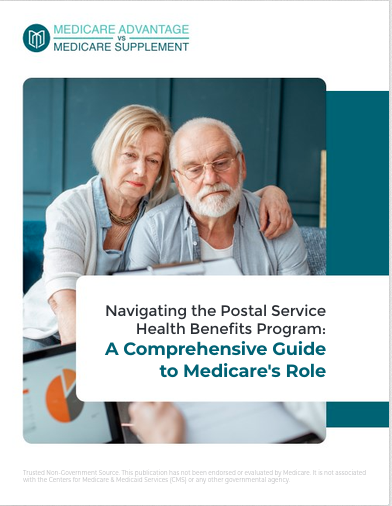Key Takeaways
- Navigating Medicare can feel overwhelming, but breaking it down step by step ensures you’ll find a plan that aligns with your lifestyle and healthcare needs.
- Comparing costs, coverage options, and timelines is essential to making the best decision for your unique situation.
Understand the Basics Before Diving In
Medicare is a federal health insurance program designed primarily for people aged 65 and older or those with qualifying disabilities. It has multiple parts, each covering specific aspects of healthcare:
- Medicare Part A: Covers inpatient hospital care, skilled nursing facilities, and some home health services.
- Medicare Part B: Focuses on outpatient services like doctor visits, preventive care, and medical equipment.
- Medicare Part C (Medicare Advantage): Combines Parts A and B, often with additional benefits.
- Medicare Part D: Offers prescription drug coverage.
Before deciding which combination works best, consider what’s most important for your healthcare needs. Do you frequently visit specialists? Do you need extensive medication coverage?
Evaluate Your Healthcare Needs
Your healthcare needs should guide your Medicare choices. Start by asking yourself these questions:
- How often do you visit doctors or specialists?
- Do you have chronic conditions requiring regular care?
- What prescription drugs do you take, and are they expensive?
- Do you plan to travel or spend significant time outside your home state?
Once you’ve outlined your needs, it’s easier to match them with the benefits each Medicare option provides.
Original Medicare or Medicare Advantage: Weighing the Options
Original Medicare (Parts A and B)
Original Medicare offers flexibility in choosing healthcare providers, as most doctors and hospitals nationwide accept it. It’s ideal if you prioritize having a wide network of providers and don’t need extra benefits like dental or vision. However, it doesn’t cover everything, and you’ll need a separate Part D plan for prescriptions.
Medicare Advantage (Part C)
Medicare Advantage plans bundle Parts A and B, often with additional perks like dental, vision, and hearing coverage. However, they may limit you to a network of providers. If you prefer an all-in-one plan and don’t mind provider restrictions, this might be your choice.
Prescription Drug Coverage: Do You Need Part D?
Even if you’re in good health, enrolling in Part D during your Initial Enrollment Period is wise to avoid future penalties. These plans vary in their drug formularies (the list of covered medications), so compare plans to ensure your prescriptions are included.
Budgeting for Medicare Costs
Medicare isn’t entirely free, and it’s essential to plan for out-of-pocket expenses. Here’s what to consider:
- Premiums: These vary by Medicare part, with Part A often premium-free for most beneficiaries.
- Deductibles: For 2024, the Part A hospital deductible is $1,632 per benefit period, and the Part B deductible is $240 annually.
- Coinsurance and Copayments: These are your share of healthcare costs after meeting deductibles. Part B typically requires you to pay 20% of approved services.
Knowing these costs upfront helps you decide what fits your financial situation.
Understand Enrollment Timelines to Avoid Penalties
Missing key enrollment windows can result in penalties or gaps in coverage. Here’s a quick breakdown of important periods:
- Initial Enrollment Period (IEP): A 7-month window around your 65th birthday.
- General Enrollment Period (GEP): January 1 to March 31 annually for those who missed their IEP, with coverage starting July 1.
- Annual Enrollment Period (AEP): October 15 to December 7 each year to make plan changes.
- Special Enrollment Periods (SEP): Triggered by specific life events like moving or losing other coverage.
Mark these dates to avoid late enrollment penalties and maintain continuous coverage.
How Lifestyle Impacts Medicare Choices
Your lifestyle plays a significant role in determining which Medicare plan works best for you. Here are some factors to consider:
- Active or Traveling Lifestyle: If you spend time in different states or travel often, Original Medicare might be better because of its nationwide coverage.
- Access to Specialists: If you see multiple specialists, ensure they accept the plan you choose.
- Additional Coverage Needs: For vision, dental, or hearing, consider whether Medicare Advantage plans offer sufficient options.
Think about how your daily life aligns with the restrictions and benefits of different plans.
Medigap: Filling in the Gaps
If you choose Original Medicare, consider a Medigap (Medicare Supplement Insurance) policy to cover costs like deductibles and coinsurance. While these policies add to your monthly expenses, they provide peace of mind by limiting out-of-pocket costs. Medigap policies are standardized and available in 10 plans, labeled A through N, so compare them to see which fits your needs.
Reassess Annually: Your Needs May Change
Medicare isn’t a set-it-and-forget-it decision. Every year, your plan’s coverage and costs can change during the Annual Enrollment Period. Use this time to:
- Review your current plan’s changes for the upcoming year.
- Compare other plans to ensure you’re still getting the best coverage.
- Adjust based on your evolving health needs or financial situation.
Get Help When You Need It
Navigating Medicare can feel complex, but you don’t have to go it alone. Reach out to resources like State Health Insurance Assistance Programs (SHIPs) or Medicare’s helpline. These services can clarify your options and help you make informed decisions.
Finding the Right Medicare Fit for You
Choosing Medicare benefits is all about matching coverage to your healthcare needs, lifestyle, and budget. Start by understanding the basics, then evaluate how each part fits into your life. By taking a proactive approach, you’ll secure a plan that works best for you now and in the future.










